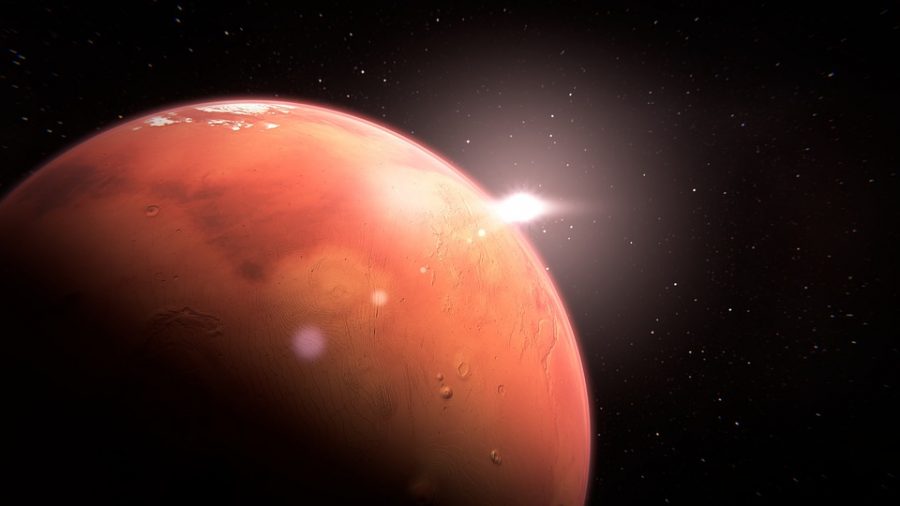Is it possible to colonize Mars?
Shining in the Sun’s light, the Red Planet is seen from the perspective of a distant satellite. The question of colonizing another planet has long been a curious subject of interest to many, and now may be the time that it is not just a theory.
October 20, 2017
Is it possible to colonize Mars?
With Global Warming and limited resources left on Earth, the idea of establishing a colony on Mars is one that needs to be strongly considered. As a qualified space nerd, I would jump on the rocket to Mars with my one-way ticket, no questions asked. There are benefits to creating a settlement on Mars, such as the possibility of new research from scientists actually living on the planet, rather than gathering samples remotely. In addition, if more people are on Mars, there will be less people on Earth to use up the limited resources.
In favor of the colonization of Mars, Elon Musk, the founder of Tesla, says it will become necessary to leave Earth and explore the cosmos, or the universe as a whole. He proposes a human expedition to Mars as early as 2023. It may be important to have a small population of people on another planet later in the future of mankind, not just because of global warming, but also out of sheer human curiosity. When asked about his opinion on the subject, freshman Kees de Vries said, “I definitely think it’s possible within the next fifty years. At least I want it to be possible.”
There are a few things that make colonizing Mars difficult. One problem is how intense the radiation is from the sun. Mars does not have the same kind of protection from the sun’s radiation that Earth does. In fact, a one-time round trip will expose the human body to nearly four times the recommended career limits for astronauts. Another problem is the temperature, ranging from 32°F during the day to -184°F at night. In contrast, the average temperature on Earth is approximately 16॰C. This may not seem like a big deal, but it is a drastic difference in the long run. The final problem is how different the surface gravity is on Mars compared to Earth. On Mars, the surface gravity is a mere 38% of the surface gravity of that on Earth. This creates the problem of extreme loss of muscle mass, among other things.
However, it may be possible to terraform the Red Planet. Terraforming, meaning “earth-shaping,” is the process of changing a planetary body’s atmosphere, temperature, and ecology to make it more like Earth so that it is habitable by Earth-like lifeforms. One example would be emitting greenhouse gases into the atmosphere which will trap heat, effectively manipulating the atmosphere, as well as the temperature. Even if we were to do this on Mars, it likely would not last. Mars has been losing its atmosphere for 3.8 billion years. The atmosphere is being swept away by solar wind, which is a stream of protons and electrons emitted by the sun. The process of terraforming is highly controversial, and it is still being perfected. Elon Musk has a plan for creating a methane-based rocket fuel on Mars, which would be essential to the expeditions. It could be a solution to some of the problems that are raised when talking about the colonization of any planetary body. Within the next fifty years, the issues will be either miniscule, or completely irrelevant as advances in technology are being made every day.
Mars has the potential to harbor life, but it has aged faster than Earth has. The Red Planet, should humans migrate, will need to be terraformed, and have some kind of protection against the sun’s radiation. To be one of the first people on a different planet in our solar system will be a day that later becomes immortalized in the history books.












